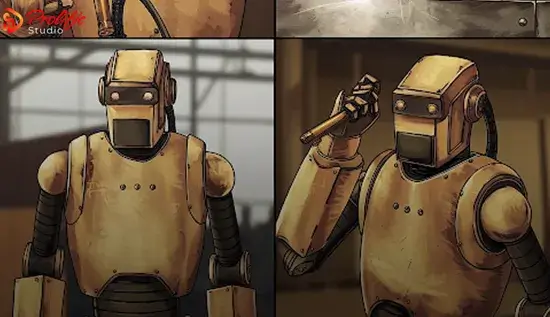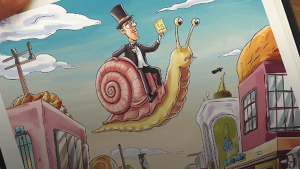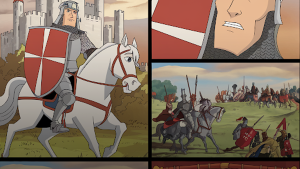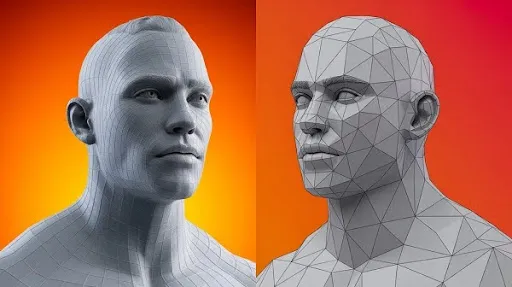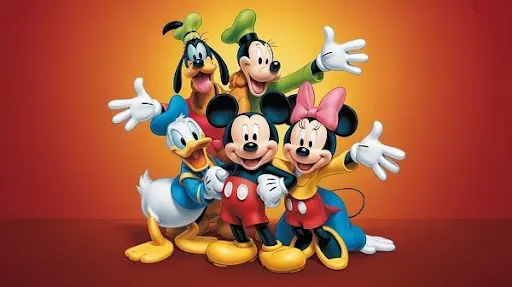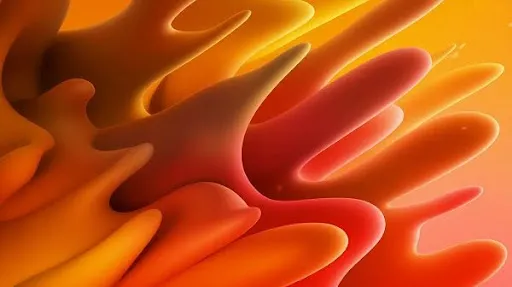A great animation puts animation storyboarding at its core, which is an integral part of the animation cycle. It is an important part of the vision for a feature film, television series, or even digital explainer video. This way, creators are able to assemble the extract flow, pacing, and composition of each scene. Storyboarding in animation, what is it, and why is it so central to success?
Prolific Studio specializes in video production services, advanced animation, and creating eye-catching, well-crafted storyboards. To do this, In this article, I will give an overview of the process involved in animation songwriting, its importance, and key tips for its acquisition.
What is Storyboarding in Animation?
Storyboarding in animation is the same as storyboarding but in a different medium. It is the use of sketches, supporting text, and comments to graphically depict each shot or movement of an animated sequence to be done. It’s a rough outline that helps determine how a scene cuts from one to the next, what props, characters, and more are in the scene and where in the frame. This practice makes for an easier time during production and allows for more creativity to be spread to different teams by providing alignment.
Key Elements of an Animation Storyboard:
- Frames: These individual panels depict key moments in the animation, allowing for a snapshot view of the most critical actions.
- Actions and Poses: Illustrates character movements, emotions, and interactions to ensure fluid storytelling.
- Annotations: Provides essential notes on dialogue, transitions, sound cues, and camera movements.
Animation storyboarding is the first step in making cartoons; it is used in many other mediums, such as movies, television, commercialized videos, video gaming, and so on.
Expanded Purpose of Storyboarding in Animation
- Narrative Clarity: Storyboarding breaks down complex stories into visual segments, making it easier for directors and animators to maintain consistency.
- Scene Composition: Helps frame shots in a way that balances action and emotion, guiding the viewer’s eye.
- Efficient Production: By visualizing scenes early, teams can anticipate resource needs, avoid unnecessary revisions, and maintain project timelines.
Storyboarding Formats
- Traditional Storyboards: Hand-drawn sketches on paper, often used in the early stages to capture raw ideas.
- Digital Storyboards: Created using tools like Toon Boom Storyboard Pro, allowing for faster revisions and the addition of color layers.
- Animatics: Storyboards converted into video form with sound, motion, and timing elements added.
Read also: 5 Different Video Animations Which You Can Use to Promote Business
Prolific Studio’s Role in Animation Storyboarding
At Prolific Studio, our expert team collaborates with clients to create comprehensive storyboards that align with their vision. From character-driven stories to commercial campaigns, we offer:
- 2D and 3D storyboarding services for an enhanced pre-visualization experience.
- Detailed animatics to simulate pacing and camera transitions.
- Custom illustrations and layouts that reflect the client’s unique style.
Examples of Effective Storyboarding
- Film Animation: Storyboards for action sequences often use multiple angles and motion indicators to convey energy and direction.
- Explainer Videos: Simple, clean storyboards prioritize clarity over complexity to ensure the messaging is straightforward.
Storyboarding is not just an initial step; it’s the backbone of any animation production. With thoughtful planning and professional artistry, the final result becomes a cohesive visual narrative that resonates with audiences.
Importance of Storyboarding in Animation
1. Planning and Clarity
A well-crafted storyboard offers a concise outline of the story, making certain the team comprehends the project’s path.
Prolific Studio’s Expertise: Our storyboarding services provide clients with detailed visual frameworks, aiding them in anticipating obstacles and improving their narratives prior to production starting.
2. Collaboration and Communication
Animation projects often involve teams of writers, animators, voice actors, and directors. Storyboarding creates a visual reference that ensures all team members remain aligned.
3. Time and Cost Efficiency
By resolving narrative or pacing issues during the storyboarding stage, studios can avoid costly revisions during production.
Pro Tip: By investing in storyboarding for animation early in the process, you can streamline the workflow, ensuring efficient resource allocation.
The Process of Storyboarding an Animation
1. Script Breakdown
The first step in creating a storyboard is breaking down the script into key scenes and actions.
- Highlight major plot points.
- Identify character movements and dialogue.
2. Sketching Frames
Artists create rough sketches that depict each scene. These frames help visualize the shot composition, character positioning, and key actions.
Prolific Studio’s Role: Our team of storyboard artists uses 2D and 3D animation techniques to provide both rough outlines and polished visuals that reflect the desired tone and style.
3. Adding Annotations
Annotations include scene descriptions, camera angles, sound effects, and transitions. These notes help animators understand the timing and flow.
4. Reviewing and Refining
Before production begins, the storyboard is reviewed to identify areas for improvement. Revisions ensure the pacing, narrative, and visual elements work cohesively.
You may also like: How to Hire 3D Product Animation Services in the USA
Key Techniques for Effective Storyboarding in Animation
1. Focus on Composition
The layout of each frame should guide the viewer’s eye to the key action.
- Rule of Thirds: Divide the frame into thirds to create balanced compositions.
- Leading Lines: Use environmental elements to direct focus.
2. Emphasize Character Poses and Expressions
Strong poses and facial expressions convey emotions and add depth to the narrative.
Example: In animated films like Inside Out, storyboard artists use exaggerated poses to communicate emotions effectively.
3. Timing and Pacing
Storyboards should reflect the timing of each action and scene transition. This helps animators understand how long each shot should last.
Prolific Studio’s Contribution: Our motion graphics and explainer videos demonstrate precise timing through well-crafted transitions and dynamic layouts.
Types of Animation Storyboarding
1. Traditional Hand-Drawn Storyboarding
This involves creating storyboards using physical sketches. While time-consuming, this method allows for a personal, organic touch.
2. Digital Storyboarding
Digital software such as Toon Boom Storyboard Pro and Adobe Photoshop simplifies the process, allowing artists to design, modify, and distribute storyboards in a digital format.
Prolific Studio’s Advantage: We utilize sophisticated digital tools to deliver clients interactive storyboards that can be swiftly revised according to feedback.
3. Animatic Storyboarding
Animatics are storyboards with added motion, sound, and voiceovers. They provide a clearer idea of how the final animation will flow.
Example: Many studios create animatics for animated TV shows and films to fine-tune pacing and scene transitions.
Storyboarding Tips for Animation
1. Start Simple
Begin with rough sketches to map out key scenes before refining the details.
2. Use Dynamic Camera Angles
Incorporate a variety of camera angles to make scenes more engaging.
3. Maintain Continuity
Ensure that character positions, props, and backgrounds remain consistent across frames.
4. Iterate and Improve
Don’t be afraid to revise your storyboard multiple times. Iteration helps refine the story.
Advanced Storyboarding for Film & Animation
Advanced storyboarding involves complex techniques, such as layered compositions, intricate transitions, and pre-visualization tools.
Prolific Studio’s Expertise: Our advanced storyboarding services include the creation of animatics and pre-visualization sequences, helping clients bring complex scenes to life.
Why Choose Prolific Studio for Storyboarding in Animation?
- End-to-End Animation Support: We offer comprehensive animation solutions, from initial storyboard creation to final production.
- Expertise Across Formats: Whether it’s a feature film, TV series, explainer video, or social media animation, our team excels in crafting visually compelling storyboards.
- Customization: We tailor each storyboard to the client’s style and project needs, ensuring a unique visual narrative.
- Use of Cutting-Edge Tools: Our artists use industry-standard software to deliver precise, detailed, and interactive storyboards.
Why Storyboarding is Essential for Animation Projects
Why is storyboarding important in preparing all types of animation? The answer lies in its ability to visualize ideas, align team members, and identify potential challenges early.
Prolific Studio’s Expertise: Our storyboarding workshops and consulting services assist clients in grasping the significance of effective pre-production planning, guaranteeing that projects proceed seamlessly from beginning to end.
Conclusion
Storyboarding is an essential phase in the animation workflow that influences the storyline, tempo, and visual arrangement. At Prolific Studio, one of the best animation studios in LA, we merge creative skills with technical know-how to produce expert, top-notch storyboards that pave the way for project success.
Regardless of whether you’re creating a feature animation, an explainer video, or a VR experience, our animation storyboarding services can turn your vision into reality. Reach out to us now to discover how we can enhance your upcoming project.

